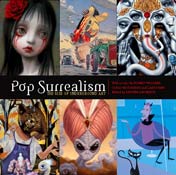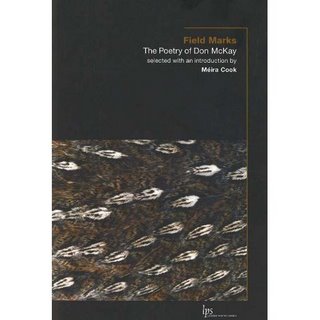"The Social Creation of Nature" by Neil Evernden
I read Evernden's The Natural Alien 2nd ed. (1993) in a Nature and Society class and really enjoyed it, so when I saw another book by Evernden which appeared to be appropriate to this class I had to pick it up. I thought that the book could at least help us to define what exactly this thing "nature" is that we are talking about. However, I found the book to be helpful much beyond that.
It took me a long time to read this book - not because I didn't enjoy it (I did) but because Evernden's argument is so complex and covers so many areas of thought (even if he says he tried to limit it). I often found I had to put it down and go think about something else for awhile before I could come back to it. I actually found that a lot of what Evernden argues in this book is something which I already thought (or perhaps felt) but that I could not clearly articulate, or explain my reasons for thinking. He draws from several fields of thought, many authors, and goes back as far as the Renaissance period (and even considers some things before that) to make his argument.
He starts out - in the preface by suggesting that despite all the advances in environmental science and in "environmentalism" little has really changed. The dangers and problems that Rachel Carson and others talked about are still just as real and pressing.
One cannot avoid the sense that however much our environmental awareness has increased and our intentions to "save the earth" improved, at root nothing has changed. And if we genuinely care, we must surely ask why. . . . [I]f as many suspect, we continually propose the same solution under different names, there seems to be little gained by hearing it yet again. Indeed there is good reason not to do so, given its apparent ineffectiveness and the suspicion that it may itself be the determinant of our futile efforts. In other words perhaps the solution is determining the question: perhaps we inadvertently define our environmental problem as that to which the application of ever more technology is the only solution (pp. ix-x)
What is nature?
Evernden says that "nature" started off as a Greek concept meaning everything but that somehow this concept started to be refined or "demoted". So that certain things became outside of nature - True reality beyond appearances (Platonic), unchangeable things such as math and gods (Aristotelian), and finally God (Christian). Only once this separation occurred could concepts such as natural and unnatural occur.
Eventually we arrived at a dual idea of nature 1. Nature as "material given, nature as everything-but-us"(p. 23) and 2. Nature as norm or absolute. Evernden suggests "...the understanding of nature as the realm of external stuff, which is studied by science, lends an aura of objectivity to the understanding of nature as norm." (p. 23)
In the Renaissance the idea of nature changed dramatically to become "explicitly devoid of human participation . . .All that belongs in a system of Nature is "necessity," the expression of the obligatory relationships that can be described through mathematics." (p.51)
Nature and Knowledge
By removing meaning from nature and reserving it strictly to humans the very idea of what constitutes knowledge has changed. This idea which Evernden attributes primarily to Galileo is
...the view of knowledge we have all come to accept as truth, even though neither we nor its official practitioners, whom we call scientists, are likely to have given much thought to its fundamental assumption of separation. Yet all cooperate in the attempt to explain life in terms of nonlife.
If the living creatures were removed, contamination would cease and the "real" Nature would stand revealed. It is a staggering undertaking, the effective expulsion of all human, or indeed all living, properties from the system that is Nature. (p. 52)
This transformations served to change how we look at the world:
The very possibility of literal objects – what we would today simply call “objects” – was unthinkable until this transformation, for objects had never been “merely” objects until this time. Before there could be a literal object, all metaphoric or figurative content had to be dismissed. …[This] sets the stage for the increasing attention to, and trust in, the literal surfaces of the natural world. (pp. 70-71)
This idea of Nature and knowledge is defended by charges of anthropomorphism.
Whereas before the Renaissance it had been considered essential that some form of empathy be employed to acquire knowledge of nature, it is now essential that empathy not be employed. And whereas it had been believed that knowledge is to be acquired through nature and the meanings discernable therein, it is now believed that knowledge of Nature results from applying human reason to discern the necessary form of Nature. This discernable form is not posited as a mere “model”: on the contrary, it is taken to be the true shape of nature, freed from distracting detail and perceptual distortion. (pp. 57-58)
Evernden suggests that Art was the means through which such a huge change in the understanding of nature, and of knowledge, was transmitted so quickly to an entire culture. I talked about this in an earlier post.
The problem with all this is that:
We are fully aware, and are constantly reminded, of the benefits that accrue to those who posses practical knowledge. And we are assured that greater acquisition and application of such knowledge – that is, more pushing and pulling nature’s levers – will in due course alleviate the contemporary “environmental crisis.” But the fact that we constantly reassure ourselves of this may have less to do with tour faith in the assertion (though it is certainly that, too) than with the fact that our very choice of language precludes the consideration of other possibilities. One can scarcely hope to be taken seriously when using, for example, metaphoric language to prescribe a solution to this crisis – such language is merely subjective, as we all know, and utterly impractical. And indeed it is impractical in this sense, for practicality is virtually defined as “pushing and pulling,” which can be discussed comfortably only in descriptive language. (p. 84)
By removing meaning from nature, and relying only on objective scientific observation for the acquisition of knowledge we have created a situation where something can only be considered real knowledge if it can be seen by everyone; it is agreed upon by social consensus as true or real.
…[T]he consequence of this is a deliberate impoverishment of individual perception, because in order to maintain the social consensus, any deviant perception must be marginalized or eliminated. (p. 86)
“The Erosion of Dualism”
Dualism [Nature vs. Human] protected us from the realization of “materialistic monism,” the nihilistic of understanding the lifelessness of nature. We could, in time, come to regard other organic beings as “behaving matter,” for we ourselves seemed protected from such reduction through the great wall of dualism. (p.90)
However, we have now started to absorb humans into the category of nature again, through the very scientific study that began the reliance on this artificial dualism. That we can now study human behaviour, human anatomy etc. scientifically, and that science has shown humans to have evolved from nature situates human at least partially in the realm of material objects – or Nature.
That which is not clearly material, objective in the modern sense, must be an artifact of some sort, an “epiphenomenon.” But when that epiphenomenon is consciousness, over very means of access to the “real” world, the consequences of this assumption are troubling to say the least. (p.91)
…we have rigorously defended a dualism that permits us to think of ourselves as fundamentally unlike anything else on the planet, if not the universe, and to establish a concept of Nature through which to characterize all else. Yet we have also used that concept as the virtual definition of that which is knowable, and we have had no reason to shun it in the examination of ourselves. When we find ourselves about to be subsumed in our own concept, our own real of the “not us,” we have little ground for rejecting the results. The only way to get off our own dissecting table is to admit the fiction. That is, if we want to prevent the realm of humanity or history becoming a subcategory of Nature, we are going to have to admit to ourselves that Nature is in fact a subcategory of Humanity or history – that we are after all the authors of the system we call Nature. And moreover, that we are the authors of the dualism that facilitates the existence of humans and nature as qualitatively distinct entities. (pp. 93-94)
“The liberation of Nature”
In our everyday assumptions, nature is regarded either as the embodiment of natural laws or as “self” – but either way, it is ours. It cannot be encountered as other, because in a sense, it cannot be encountered at all: it is posited as something beyond the human world. The famous dualism conceals the fact that whether we opt for one “side” or the other, we still find ourselves and little more. The other, the genuinely ultrahuman being of nature, has become invisible, it has no place. (p. 121)
He suggests that occasionally people can encounter the truly ultrahuman, as a child or that “…occasionally an exceptional adult can still encounter an animal in all its ultrahumanity.” (p.121)
It is no accident that we find ourselves, in the end, considering the words of creators such as [Annie] Dillard who posses the means of evoking sustained images of otherness – and who are uniquely permitted by society to use the essential, metaphoric language. If, as I have suggested, it required the inspired vision of artists of the past to constitute the “things” which occupy the ordered domain of Nature, it will surely require a similar level of inspiration to reconstitute them. The so-called environmental crisis demands not the inventing of solutions, but the re-creation of the things themselves. (p. 123)
Evernden is unsure whether this re-creation is possible through all the social and cultural constructions we have created to maintain the dualism of humanity and nature. However, if it is possible it is through the work of creative artists who can change the way we see and think about the world around us.





